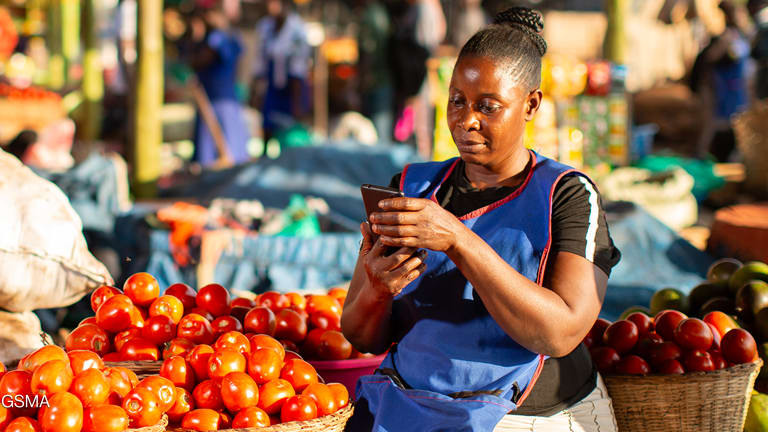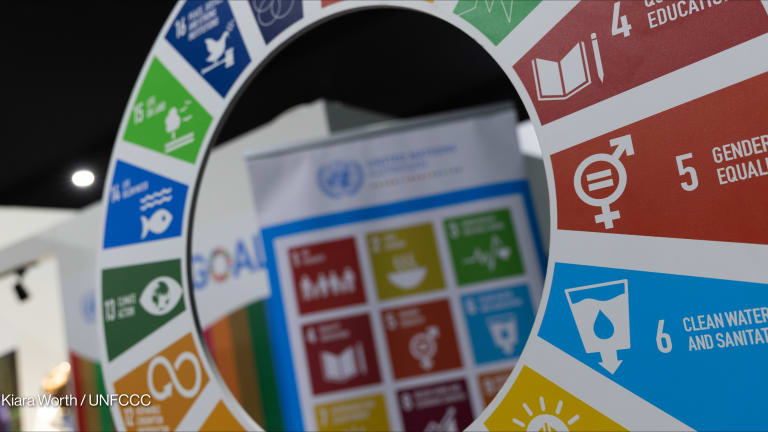
It’s hard to overstate the impact mobile technology has on global development efforts. The spread of mobile cellular and data networks, coupled with the falling cost of mobile phones and other devices, has allowed governments, NGOs, and mobile operators to provide information and services — including education, health, and financial services — to people in even the remotest areas.
Mobile is the most rapidly adopted technology in history, having connected more than 5 billion people globally, 3.7 billion of those in developing countries. In these countries, mobile is often the most widespread infrastructure, offering a powerful platform for inclusion.
Mobile technology has also led to an impressive array of financial services, with more than half a billion users accessing mobile money now available in 92 countries. The technology is transforming industries such as health care, transport, automotive, and education. It is also helping governments engage with and more efficiently deliver services to citizens, and address global challenges such as refugee crises, epidemics, and natural disasters. Recognizing its potential for social impact, in 2016, the mobile industry became the first to commit to the United Nations Sustainable Development Goals, and now actively tracks its contribution across all 17 goals.
All of this has been possible because mobile operators have invested in networks across the developing world over the past three decades, eliminating the need for expensive landline infrastructure. Global data from Gallup’s 2016 World Poll indicated that even in the world’s poorest regions — including sub-Saharan Africa and South Asia — clear majorities of residents now say they have their own mobile phone. Among 23 countries classified as “low income” by the World Bank in 2016, 56 percent of residents reported that they have a mobile phone; among the 37 countries in the lower-middle-income group, this figure rises to 75 percent.

The powerful and growing effects of mobile devices on life in the developing world is evident. But they also raise an important question that can’t be addressed simply by listing the various uses of mobile phones: Do they actually improve how people in developing countries view their own lives?
A new study of global data from the Gallup World Poll with the GSMA, the organisation that represents the worldwide mobile communications industry, released yesterday, addresses this question by looking at the relationships between people’s use of mobile phones and the internet, and their self-reported ratings of their lives — which researchers refer to as subjective well-being, or SWB. The study finds that, even after accounting for income and a range of other potentially confounding variables, mobile phone ownership supplemented with internet access is associated with improvements in one of the most common measures of SWB, the overall ratings people give their lives.
At the global level, the results suggest the power of mobile phones to improve lives is largely linked to their status as the primary device that most of the world’s residents use to access the internet. In the absence of internet access, those who have a mobile phone give similar life ratings as those without one.
In a few regions, however, a significant increase in life evaluations is associated with mobile phone use only even without internet access. These include sub-Saharan Africa, which has historically lacked widespread fixed-line communications infrastructure and where socioeconomic development efforts have sought to provide vital services and information via the more prevalent cellular-only phones.
Among sub-Saharan Africans, mobile use alone is associated with an increase of almost a third of a scale point in average life ratings, while adding internet access produces an additional rise of about half a point. In light of the considerable differences in income and living standards associated with even a single scale-point difference in average life ratings, the gaps that accompany mobile and internet use in the region are substantial.

Multivariate analysis techniques confirm that these relationships are statistically significant even in models that hold a broad range of socioeconomic variables constant. In other words, the higher life ratings associated with mobile phone and internet use cannot be fully explained by the fact that access to these technologies is greater in more affluent environments.
Implications
Life evaluations and other SWB indicators are becoming increasingly common as complements to traditional objective measures of material living standards. A number of governments and international organisations are incorporating well-being measures among their benchmarks for social progress — see for example the United Nations World Happiness Report and OECD’s Better Life Index. These metrics provide vital information that objective indicators sometimes miss; for example, life ratings were falling sharply in Tunisia and Egypt in the years preceding the Arab Spring uprisings, even as per-capita gross domestic product was rising in both countries.
That’s why, in efforts to evaluate the influence of mobile technology on development efforts worldwide, subjective indicators should not be ignored. Our figures demonstrate the many and varied ways in which people are using mobile technology in life-enhancing ways: The GSMA Mobile for Development program, through its work with donors, mobile operators, and innovators, has affected 30 million lives across 49 countries to date. Over 12.5 million smallholder farmers have been reached with mobile agricultural services to improve their crop yields and income. Over 1.5 million women and their families, in eight countries in sub-Saharan Africa, have received life-saving maternal and child health and nutrition information via their phones, improving knowledge and practices. Thirty-three mobile operators have made 47 commitments to reduce their gender gap in mobile internet or mobile money services, providing life-enhancing services to more than 17 million women. There are more than half a billion registered mobile money accounts in 92 countries and mobile money is now available in two-thirds of low- and middle-income countries.
Complementing these numbers, the new GSMA/Gallup study is the first to demonstrate objective, robust analysis quantifying the impact of mobile on people’s lives consistently across markets. In doing so it provides, for the first time, evidence of the extent to which these and the multitude of other ways people use mobile technologies have improved how people assess the quality of their lives.









